Winter Projects (and well beyond) – Toolmaking
Since this list is already getting too long and I still have a large number of items yet to go, I decided to consolidate a half-dozen of my “winter projects (and well beyond)” into one with the identical theme for all the elements — making tools. I have no doubt there will be other additions as time goes on, but these are the ones already on my “to do” list.
Copying (?) A Robert Towell (?) Infill Miter Plane
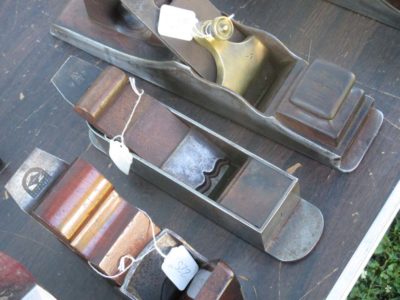
I do not own many truly “collectible” vintage tools, but this plane is one of them. Perhaps made by London planemaker Robert Towell in the early 1800s, I bought this very-little-used plane at Martin Donnelly’s several years ago from one of the tailgate vendors.

Though the characteristics of the plane are consistent with Towell’s work, he was apparently somewhat cavalier about stamping his planes and this one is unmarked. Had he stamped this one I would have certainly not been able to afford it. So, thanks to his oversight I was able to become the owner of this superb beauty at a 90% discount (!) off an identical plane with his stamp.
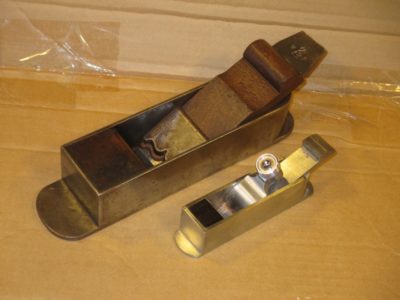
In addition to this full-sized Towell miter plane, I have one of Raney Nelson’s early planes, a miniature scale but similar form. I use it for trimming parquetry lozenges, one of a half-dozen planes I employ for that task (is that too many?). Maybe I need to purge that inventory a bit.
Nah, I’ll wait until I finish and fill my new standing tool cabinet. Check back with me then.
In the meantime, I’m thinking I need to make a third plane to complete this set, one halfway in between the sizes.
You (and I) might ask, “Don, do you really need it?”
And my reply would be, “Butt out of my bidnez.”
The project would give me a chance to invite over my new friend, an Amish blacksmith and newcomer to the county (heck, I’m a newcomer and we bought our cabin twenty years ago! I expect my soon-grandson will be a “newcomer” also, but his grandkids maybe not), who is very interested in this kind of tool making. It would also give me the opportunity to approach the local bladesmith/exotic dancer about fashioning a Damascus steel blade.
What, you think Austin TX is the only place with eccentric folks? We might not be San Fransicko but we do have a lot of competing drummers.
****************************************************
Triangle Squares for Parquetry
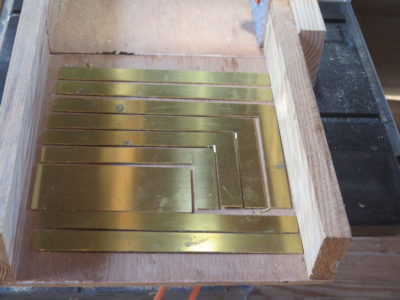
A couple years ago when I was making a set of Roubo-esque brass cabinetmakers’ squares I also wound up with a solid 30-60-90 triangle with a shoe on the short base that I have found exceedingly useful in the intervening period, especially for laying out Roubo bench dovetails and parquetry pinwheels.
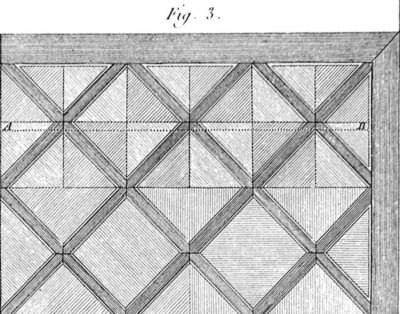
As I am about to move even more into the work of parquetry I am thinking that I need a full set of 30-60-90 triangles; one with the shoe on the long base and one with the shoe on the hypotenuse.

In fact, I might need some additional ones as I move past my usual vocabulary of parquetry, including one dedicated to the 45-degree angle and another with a 22.5-degree feature, and perhaps even more. I guess I could use my EDC pocket Delve square for the 45, but a full dedicated brass set would really be nice.
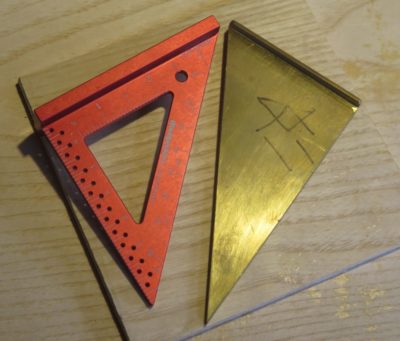
This is definitely one series of exercises drawing on the use of a micrometer caliper integrated with those 10th grade trigonometry sine-cosine-tangent tables I figured would NEVER come in handy.
*************************************************
Japanese Joinery Hammer
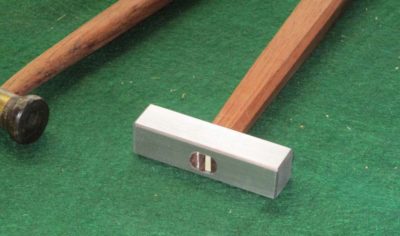
Two years ago as I was constructing my Japanese tool box I also made a small Japanese-style (sorta) hammer for doing delicate work like driving small nails and pins and adjusting planes. I recognized at the time the void in the kit of a beefier hammer for doing joinery. It will be nearly identical to the smaller one except for the scale, being made from 1″ square bar stock rather than the 1/2″ bar stock of the previous one.
***************************************************************
Custom Stamps and Branding Iron Tips
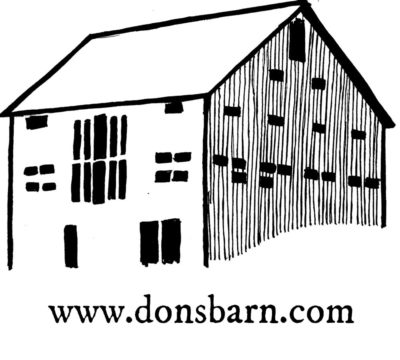
I’ve always wanted a set of stamps/branding irons for marking my new work with my sign, the barn logo, and the date. I would need three separate items, one to create an embossed presentation of my stylized initials, one for the simpler barn logo, and one would be a set of the letters “M, L, X, V, I” for the year/number stamp. Hey, if you are going to live in the past, go way back.
I know there are companies out there who do that for a reasonable outlay, but I’d like to give it a try myself. Actually, I might need two complete sets — small ones, for small objects, and large ones for larger objects such as Gragg chairs. Since I keep plenty of raw metal bar stock on hand that would suit my needs for that undertaking, I’m going to give it a try.
I hope to start these sometime in the next couple weeks, so there may be some posts about that in a month or so.
*******************************************************************
Finishing the Restoration of an Infill Smoother

Years ago, I bought an infill smoother and got part way through its restoration. This is the year to finish it with fitting a new iron (already in hand from Josh) and a new wedge. My only question at this point is, “How ‘over the top’ do I make the wedge?
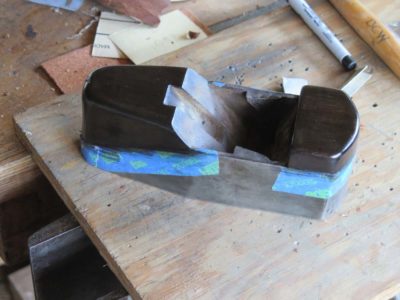
**********************************************************************
Expanding My Selection of Tools from Roubo’s Veneering Tool Kit

During the creation of the English translation of Roubo’s L’Art du Menuisier I made a number of tools for completing some of the accompanying photo essays in the books. This did not satisfy my appetite for his tool kit but merely whetted my appetite. The tools I make from the oeuvre will not be for curiosity-only purposes, these will be tools I expect to use in the shop regularly. They worked in 1760, I expect they will work after the Zombie Apocalypse.
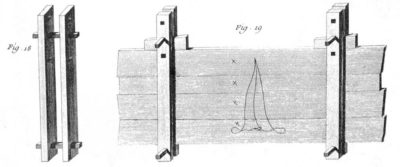

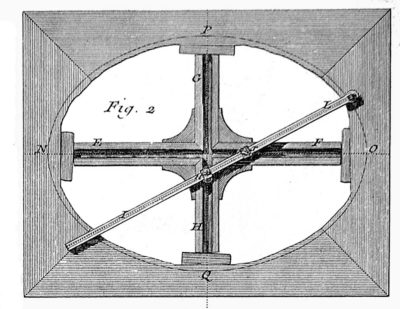
In some cases the tools will be even more of the iterations I already possess (bar clamps) and in other cases they will be new to my tool kit (veneerer’s hammer [as opposed to veneer hammer]), and some completely off the grid (oval cutter).



There is no part of this post that did not leave me smiling. Beautiful tools, humor both subtle and undiplomatic, and everything stimulated my imagination for what I might do with more time. Oh! and oxford commas.